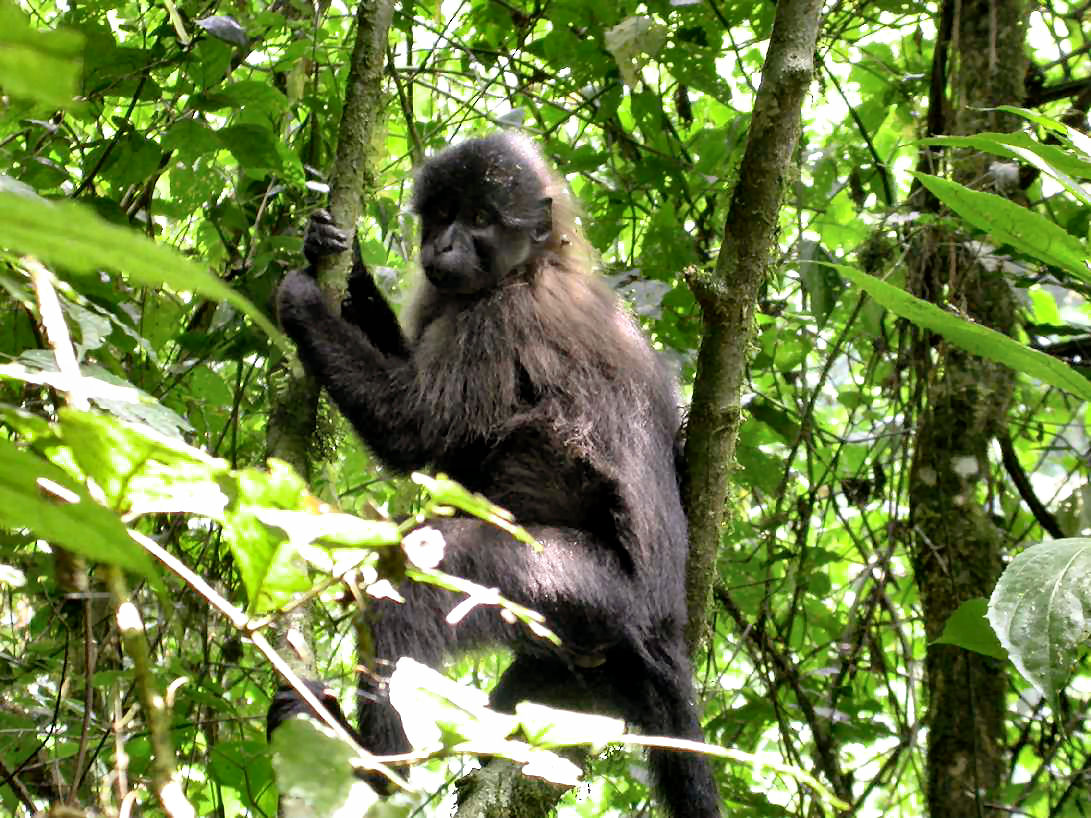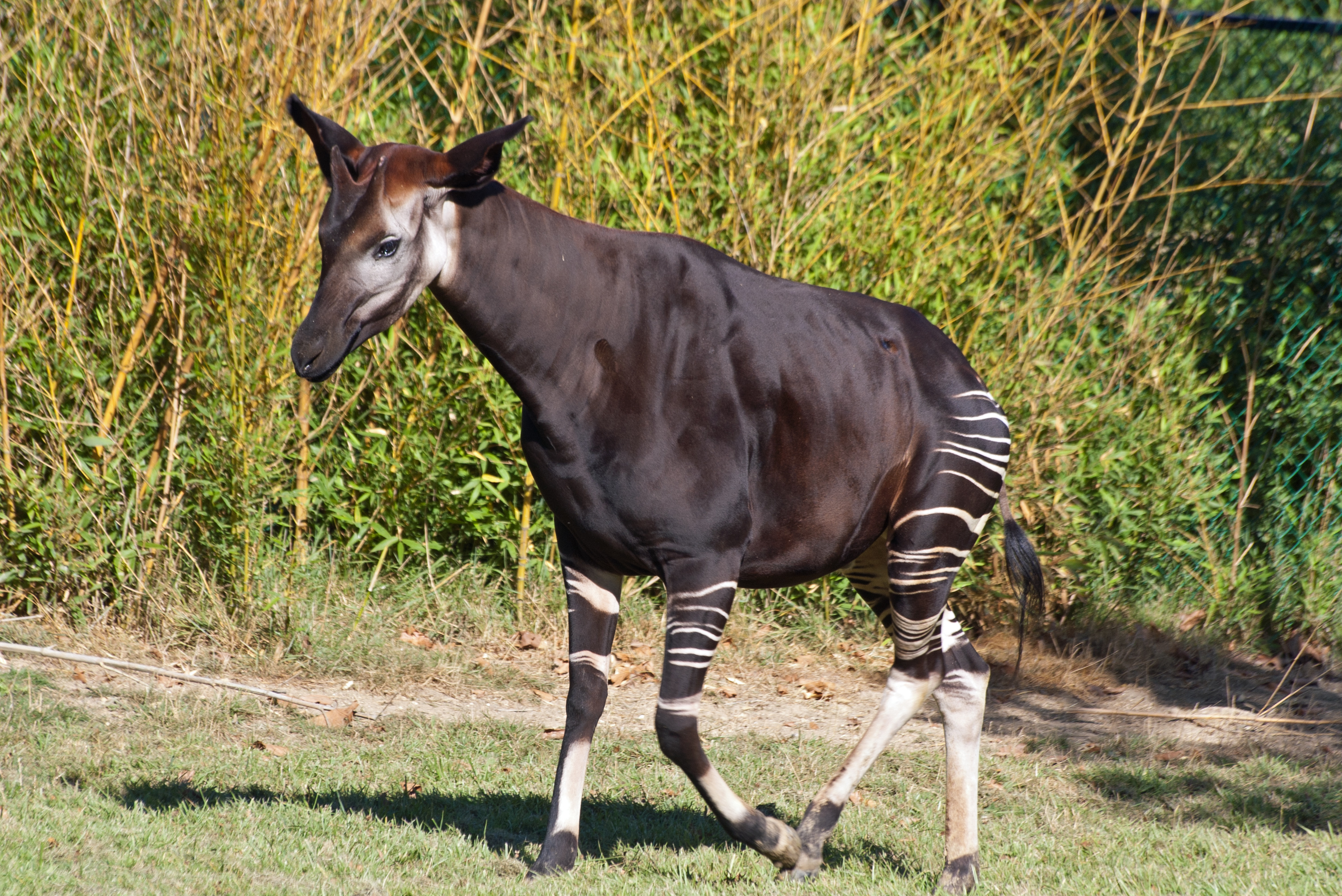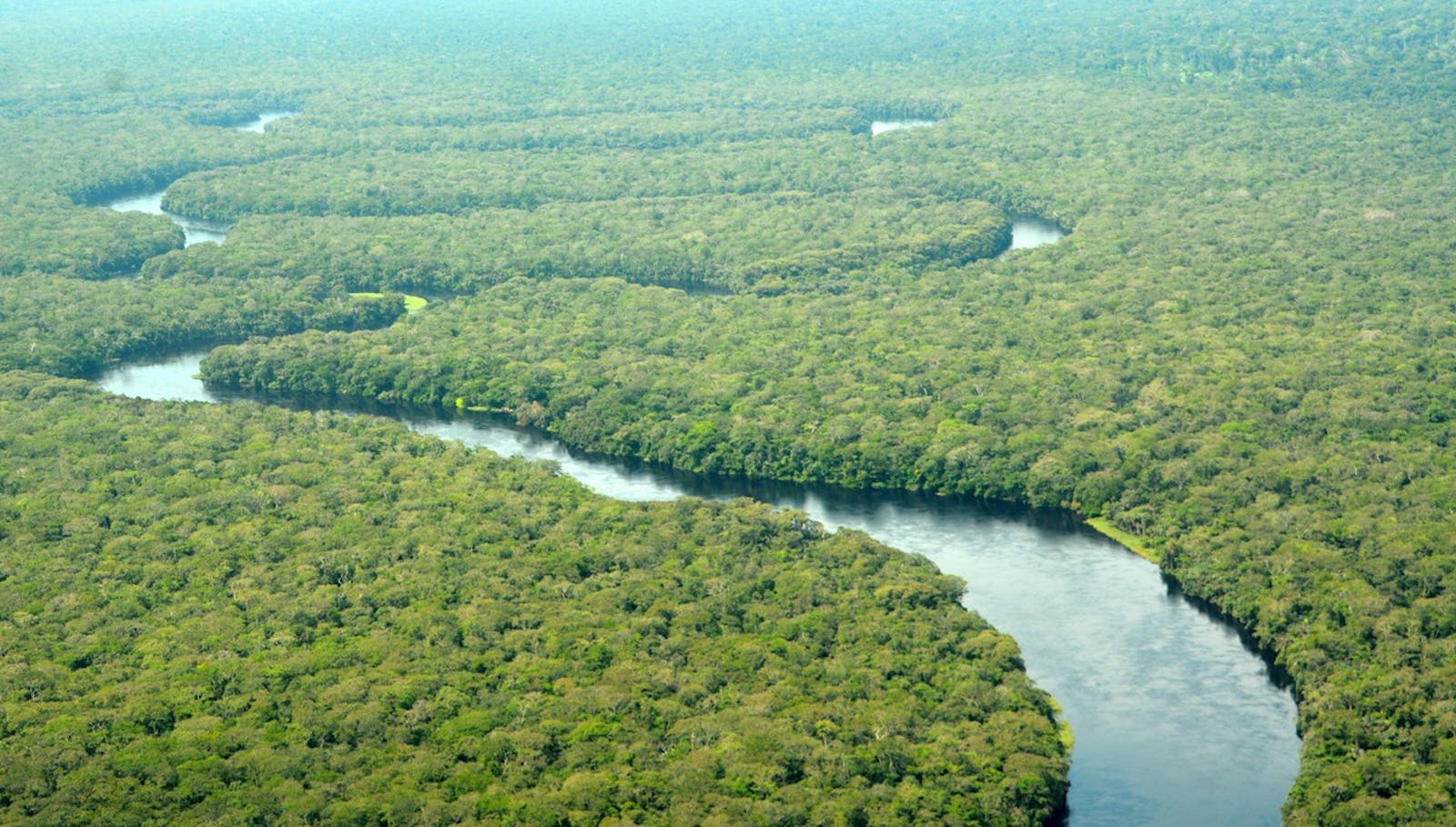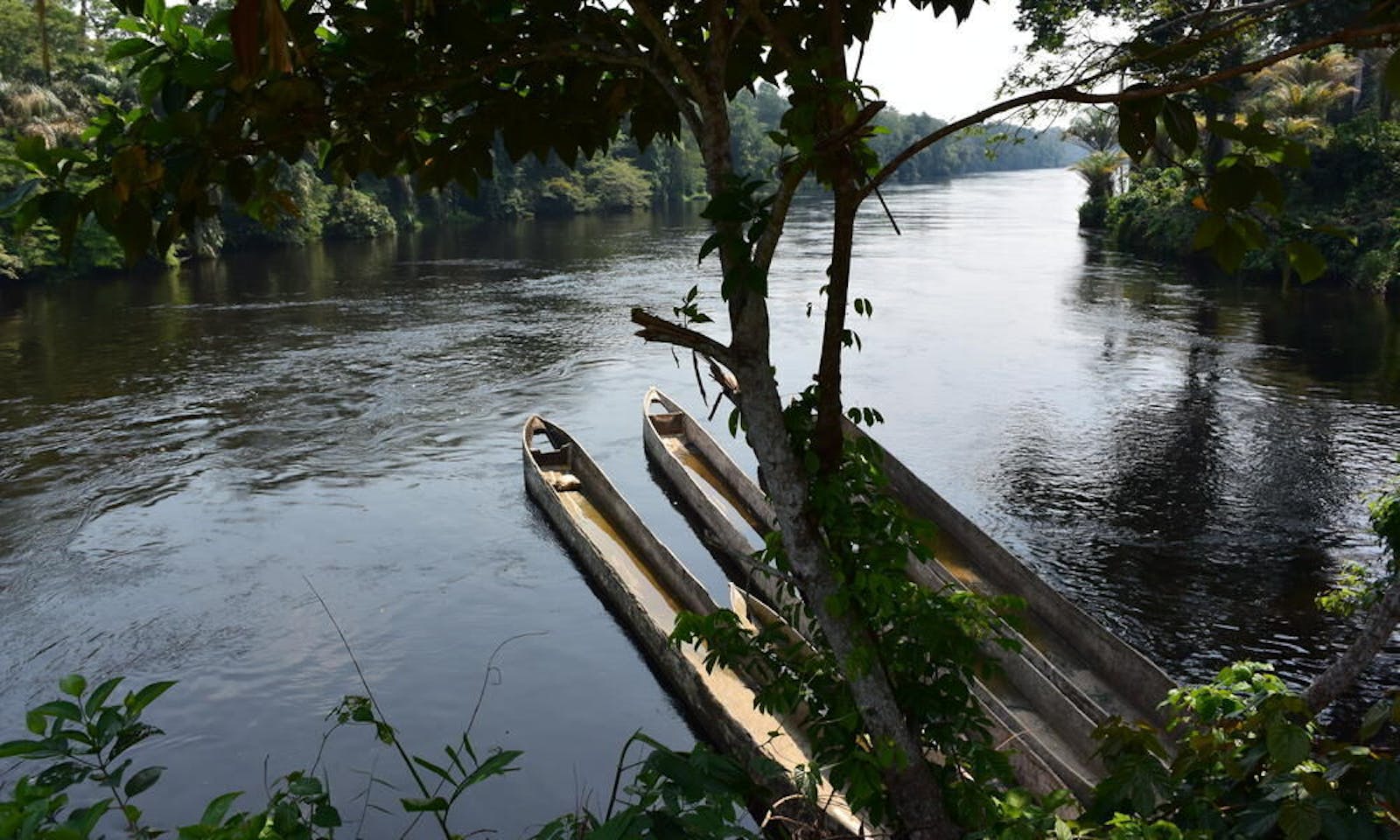Central Congolian Lowland Forests
The ecoregion’s land area is provided in units of 1,000 hectares. The protection goal is the Global Safety Net (GSN1) area for the given ecoregion. The protection level indicates the percentage of the GSN goal that is currently protected on a scale of 0-10.
Bioregion: Central Congolian Tropical Forests (AT14)
Realm: Afrotropics
Ecoregion Size (1000 ha):
41,566
Ecoregion ID:
3
Conservation Target:
93%
Protection Level:
2
States: Democratic Republic of the Congo
The Central Congolian Lowland Forests support an important population of African forest elephant and are home to the world’s largest populations of bonobo, a primate that is closely related to the chimpanzee and is endemic to the DRC. The lowland forests are a mosaic of diverse vegetation, with seasonally inundated and permanent swamp forests in the north and drier semi-evergreen rainforests and grasslands in the south.
The ecoregion lies in the central part of the Congo Basin, south of the wide arc formed by the Congo River. The river functions as a distribution barrier to many species, thereby isolating this lowland basin along its northern, eastern, and western limits. The ecoregion is relatively flat and low-lying, around 400 m above sea level, meaning most rivers flow slowly with heavy sediment loads, and have numerous alluvial islands. The elevation and topographical complexity increases towards the southeast, where hills up to 700–800 m are found.
There is approximately 2,000 mm of rainfall annually. The mean maximum temperature is around 30oC in the central portion, and falls to around 27oC along the southeast margins. The mean minimum temperature is between 18 and 21oC, with little seasonality and high humidity. Approximately 2500 years ago, there appears to have been a large-scale erosional event in this region due to greater seasonality in the rainfall. During this time, forests became highly fragmented and were replaced by drier vegetation including wooded savannas, leaving a “fluvial refuge” in the central part of the Congo basin where the forest remained intact. This refuge is where the Central Congolian Lowland Forests are found today.

Grey cheeked mangabey. Image credit: Lea Maimone, Creative Commons
This ecoregion also falls within the Guineo-Congolian regional center of endemism and is noted for its size and habitat intactness, with populations of most species fluctuating within normal ecological limits. The vegetation in this region is diverse, with estimates between 1,500 and 2,000 vascular plant species, of which about 10 percent are endemic. The evergreen rain forests are dominated by stands of Gilbertiodendron dewevrei. Semi-deciduous forest covers almost all areas between the major river systems, and is characterized by Staudtia stipitata, Polyalthia suavaeoleus, Scorodophloeus zenkeri, Anonidium mannii, and Parinari glaberrimum.
Available data indicate that species richness and endemism are markedly lower than other moist forest ecoregions of the Congo Basin, possibly due to the lack of species interchange caused by the river barriers. However, this has also led to endemism amongst mammal species including the Lesula monkey and the Salonga guenon. Other near-endemic mammals include the golden-bellied mangabey, bonobo, okapi, and Allen’s swamp monkey. There are no known strict endemic avifauna species, but there are two near-endemics, the Congo peacock and the yellow-legged malimbe. This ecoregion also offers critical habitat to the African slender-snouted crocodile.
Much of the forest habitat of the ecoregion remains intact; it is estimated that over 300,000 km2 of forest still exists. There is one large protected area, Salonga National Park (36,000 km2) found in two parts. It is one of the largest national parks in the world, and the second largest tropical forest national park in the world. Other protected areas include the Lomami National Park, Sankuru nature reserve, Lomako-Yokokala Nature Reserve, and Lyondji Bonobo Community Reserve. The ecoregion also lies in parts of the Tumba-Lediima Nature Reserve and Ngiri-Tumba-Maindombe Ramsar Site.

Okapi. Image credit: Daniel Jolivet, Creative Commons
Human populations used to be small and the highest densities are found along the rivers where people engage in fishing, cultivation of cassava, and hunt animals from the forest. The population density has risen to 13 people per km2 in recent decades. The threats to the habitats in this ecoregion are low and the conservation potential is high. There has been some forest lost to farming and logging; however, this does not pose a significant threat to either habitats or species at this time. Poaching for ivory poses a serious threat to the elephants of this ecoregion, while occasionally baboons are also hunted and wildlife captured for live animal trade.
The priority conservation actions for the next decade will be to: 1) reduce the illegal trade of bushmeat and ivory; 2) increase law enforcement and prosecution; and 3) implement programs which aim to provide alternative livelihood opportunities and give communities land ownership.
Citations
1. World Wide Fund for Nature. 2018. Salonga Programme. [Online]. [Accessed 16 January 2018]. Available from: http://www.wwf-congobasin.org/where_we_work/democratic_republic_of_congo/salonga_programme/?
2. European Commission. 2016. Larger than Elephants, Inputs for an EU strategic approach to wildlife conservation in Africa - regional analysis. Luxembourg: Publications Office of the European Union.
3. Maley, J., Doumenge, C., Giresse, P., Mahé, G., Philippon, N., Hubau, W., Lokonda, M.O., Tshibamba, J.M. and Chepstow-Lusty, A. 2017. Late Holocene forest contraction and fragmentation in central Africa. Quaternary Research. pp.1-17.





